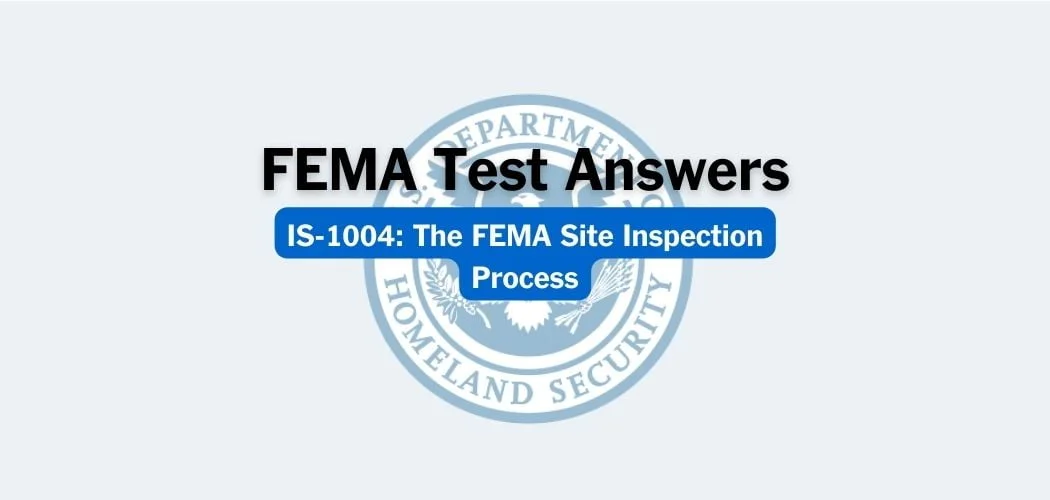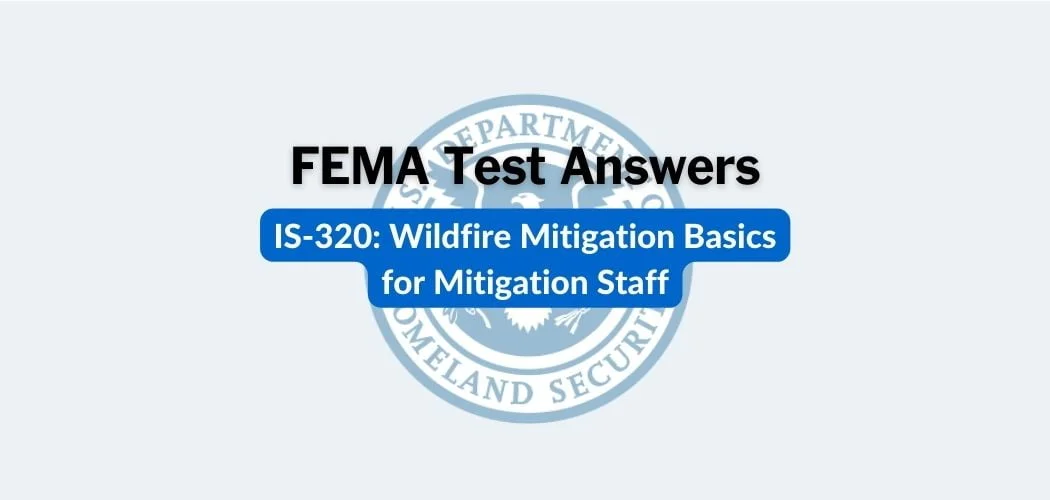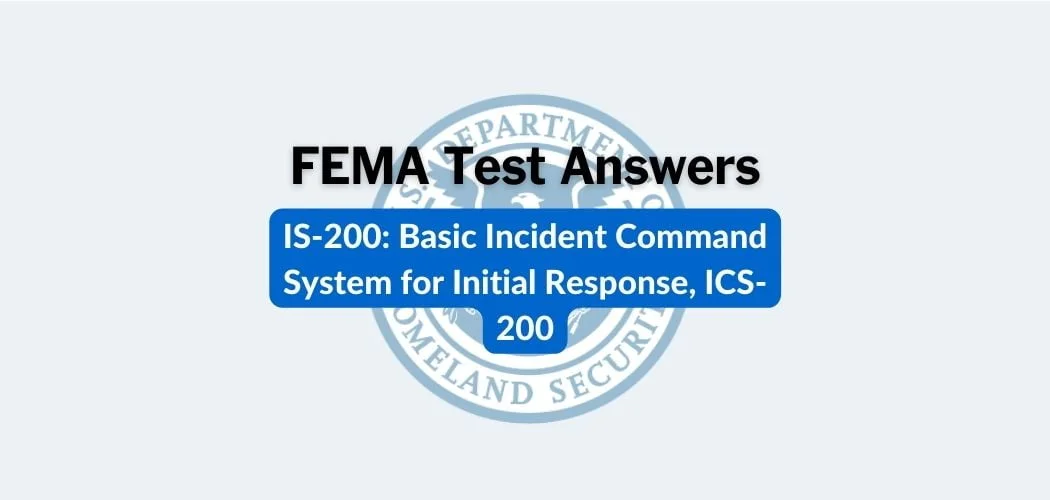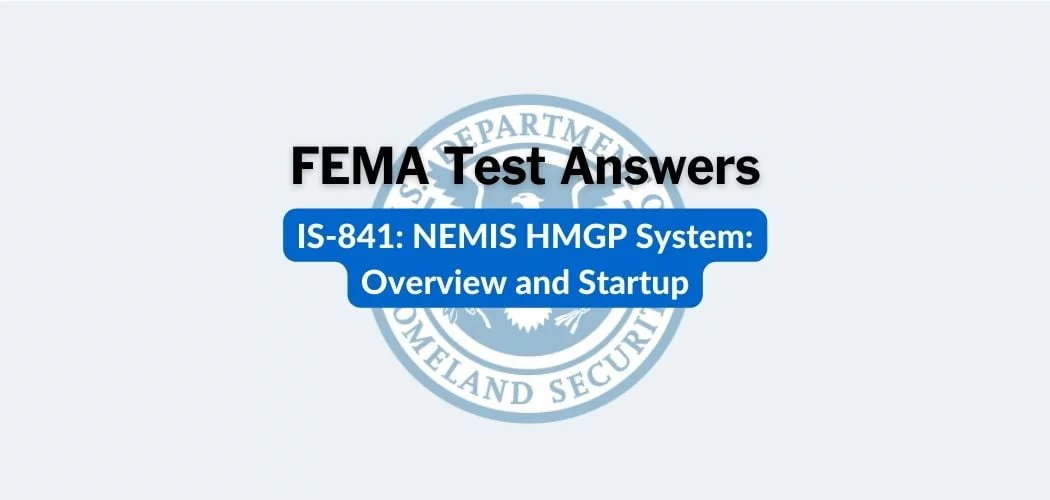Overview: The FEMA IS-212.B course was published on 12/7/2015 to educate students in the process of developing quality mitigation planning and project grant application elements for the Unified Hazard Mitigation Assistance (HMA) grant programs.
Primary audience: State, Tribal, Territorial and local government staff, and private non-profit (PNP) organizations that are eligible applicants or sub-applicants under HMA grants; and FEMA employees assigned to HMA grant activities.
FEMA IS-212.B test answers
Each time this test is loaded, you will receive a unique set of questions and answers. The test questions are scrambled to protect the integrity of the exam.
Question 1. The two electronic application systems used for the HMA grant programs are:
A. Mitigation Application Grant Processing System (MAGPS) and MitApp
B. Electronic Grants Management System (eGrants) and HMGP System
C. MitApp and iMit✅
D. FEMAMit and FEMA-Hazard Mitigation Grant Process (FEMA-HMGP)
Question 2. All HMA grant programs provide funding after a Federally-declared disaster.
A. TRUE✅
B. FALSE
Question 3. FEMA-approved State, Indian Tribal, and Local Hazard Mitigation Plans are valid for:
A. Five years.✅
B. Ten years.
C. Three years.
D. It depends on other plans that the mitigation plan is linked to.
Question 4. The first step in the mitigation process is:
A. Securing local cost-share funding.
B. Hazard mitigation planning.✅
C. Searching for a project manager.
D. Selecting which projects you want to implement.
Question 5. With your understanding of the definition of mitigation, which of the following is true:
A. Mitigation projects create safer communities and save money through lower post-disaster rebuilding/replacement costs.✅
B. No mitigation project can eliminate 100% of future risk.
C. Mitigation funding can be used to improve a community’s response and recovery programs.
D. Mitigation projects seek to provide a short-term impact on hazard risk.
Question 6. Which statement about how mitigation projects provide value is true?
A. A report by the Congressional Budget Office showed that on average, future losses were reduced by about $3 for every dollar spent on mitigation projects.
B. A 2005 Loss Avoidance Study completed by the Multihazard Mitigation Council Study found that an investment of $3.5 billion saved $14 billion.
C. Mitigation projects reduce post-disaster disruption and allow quicker rebuilding.
D. All of the above.✅
Question 7. Which of the following is NOT a process in the HMA Federal award life cycle?
A. Federal Award
B. Activity Implementation
C. Risk Assessment✅
D. Federal Award Closeout
Question 8. Which HMA program has a goal to reduce or eliminate claims made against the National Flood Insurance Program?
A. Flood Mitigation Assistance Program (FMA)
B. Hazard Mitigation Grant Program (HMGP)
C. Pre-Disaster Mitigation Program (PDM)✅
D. Hazard Mitigation Assistance Program (HMAP)
Question 9. Mitigation project types must be outlined in the mitigation plan.
A. TRUE✅
B. FALSE
Question 10. All HMA grant applications must include a Scope of Work, Schedule, and Cost Estimate, and must be cost-effective, technically feasible, and comply with Environmental and Historic Preservation requirements.
A. TRUE✅
B. FALSE
Question 11. Which processes are conducted during the Application Development phase of the Federal award life cycle?
A. Develop the Cost Estimate.
B. Develop the Scope of Work.
C. Develop the Work Schedule.
D. All of the above.✅
Question 12. Mitigation capabilities include community-wide risk reduction projects that protect against natural hazards.
A. TRUE✅
B. FALSE
Question 13. Which HMA program provides Federal awards for all hazards mitigation planning and the implementation of mitigation projects for a variety of hazards prior to a disaster event?
A. Flood Mitigation Assistance Program (FMA)
B. Hazard Mitigation Grant Program (HMGP)✅
C. Pre-Disaster Mitigation Program (PDM)
D. Hazard Mitigation Assistance Program (HMAP)
Question 14. After a Federal award is issued, mitigation projects and planning activities must be implemented in accordance with Federal award requirements.
A. TRUE✅
B. FALSE
Question 15. The difference between a benefit-cost analysis (BCA) and a Loss Avoidance Study (LAS) is:
A. There is no difference because a BCA and LAS are the same.
B. BCA demonstrates the cost-effectiveness of FEMA’s mitigation programs, while an LAS analyzes hazard risk.
C. A BCA and LAS are the same things, except that one is an analysis and the other is a report.
D. A BCA is completed during the grant application phase for a proposed mitigation measure, while a LAS is completed after a project has been tested by the hazard event it was designed for.✅
Question 16. During the Application Review phase of the Federal award life cycle, all approvable grant applications are awarded.
A. TRUE✅
B. FALSE
Question 17. Which of the following is NOT part of the mitigation planning process?
A. Planning Process Description
B. Activity Identification✅
C. Mitigation Strategy
D. Plan Adoption Process



